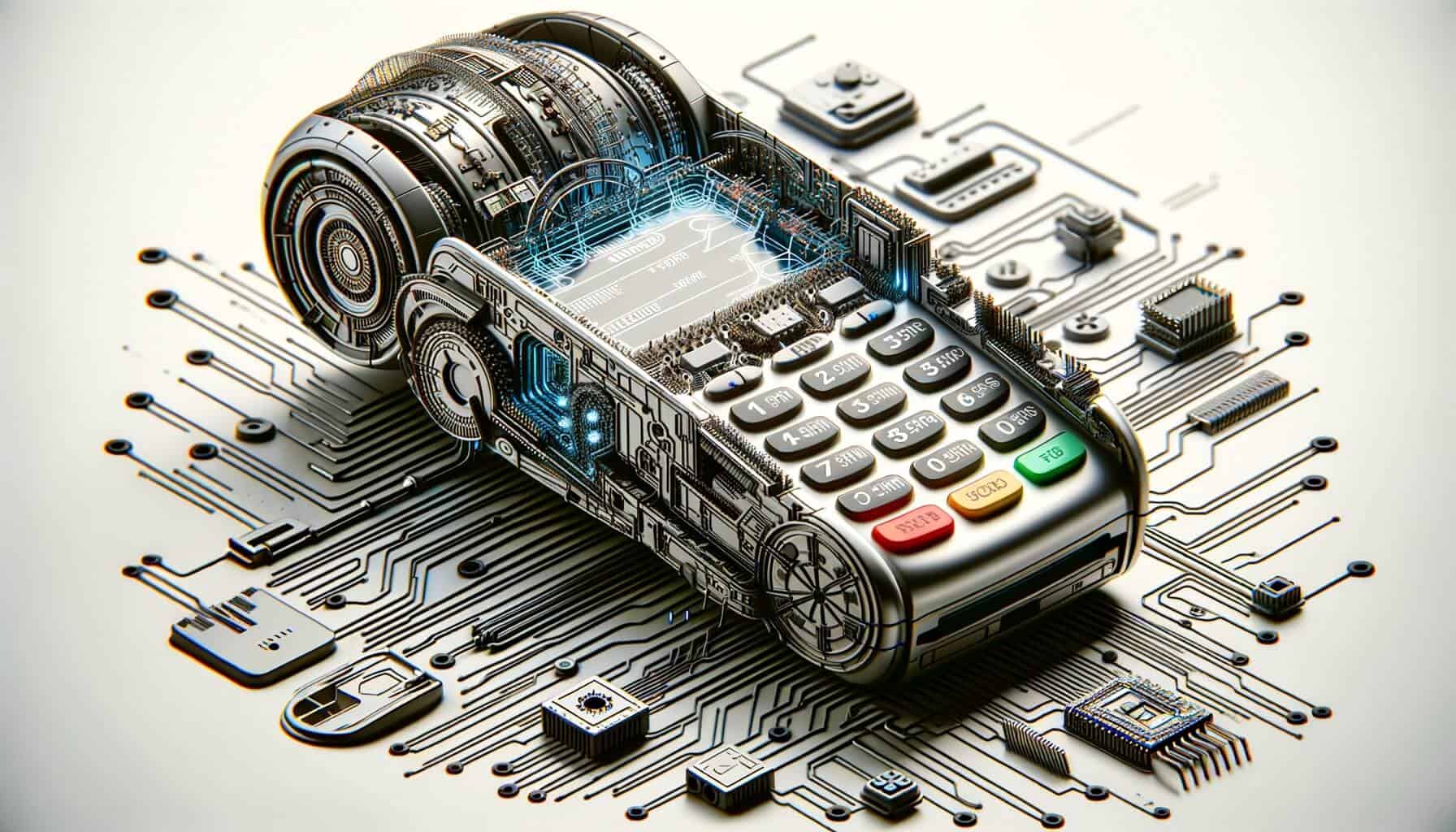
By Catharine Proctor January 29, 2025
Credit card terminals are electronic devices used to process payments made with credit or debit cards. They play a crucial role in facilitating transactions between merchants and customers, ensuring a seamless and secure payment experience.
In this article, we will delve into the intricacies of credit card terminals, exploring their components, the transaction process, different types available, communication with payment networks, security measures, troubleshooting common issues, and addressing frequently asked questions.
Understanding the Components of a Credit Card Terminal
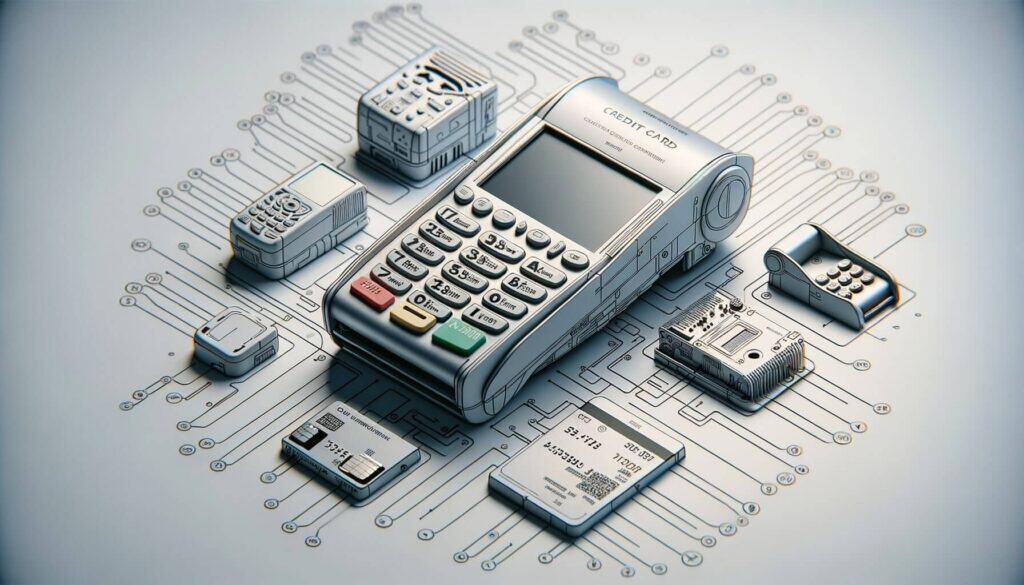
Credit card terminals consist of several key components that work together to process payments. These components include a card reader, a keypad, a display screen, a printer, and a communication interface. Let’s take a closer look at each of these components.
1. Card Reader: The card reader is the primary component of a credit card terminal. It reads the information stored on the magnetic stripe or chip of a credit or debit card. The reader uses magnetic or chip technology to extract the necessary data, such as the cardholder’s name, card number, and expiration date.
2. Keypad: The keypad allows the cardholder to enter their personal identification number (PIN) for added security. It also enables the input of transaction amounts and other relevant information.
3. Display Screen: The display screen provides visual feedback to the user. It shows transaction details, prompts for PIN entry, and displays error messages if necessary.
4. Printer: The printer generates receipts for both the merchant and the customer. It prints out transaction details, including the date, time, amount, and merchant information. The customer’s copy is handed to them as proof of purchase, while the merchant retains their copy for record-keeping purposes.
5. Communication Interface: The communication interface allows the credit card terminal to connect with the payment network. It can be a physical connection, such as an Ethernet or phone line, or a wireless connection, such as Wi-Fi or Bluetooth. This interface enables the terminal to transmit transaction data securely to the payment network for authorization and processing.
The Process of Credit Card Transaction
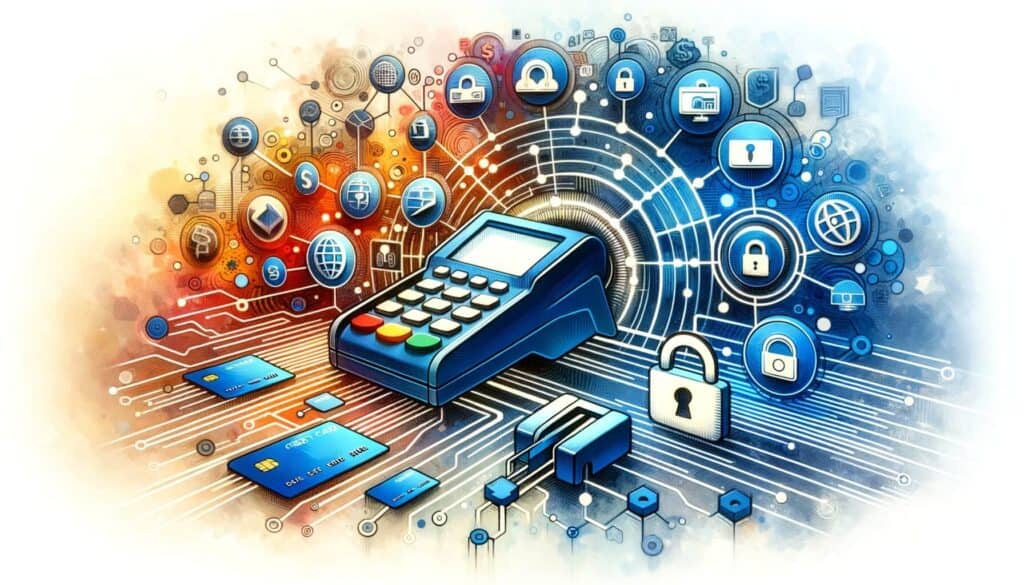
Now that we understand the components of a credit card terminal, let’s explore the process of a credit card transaction. The transaction process involves several steps, from card insertion to authorization and settlement. Here’s a breakdown of each step:
1. Card Insertion: The customer inserts their credit or debit card into the card reader of the terminal. The card reader then reads the information stored on the card’s magnetic stripe or chip.
2. Transaction Initiation: Once the card is inserted, the terminal prompts the customer to enter the transaction amount. The customer can either enter the amount manually or select it from a pre-defined list of options.
3. PIN Entry: If the transaction requires a PIN for verification, the customer enters their PIN on the keypad. The terminal encrypts the PIN and sends it securely to the payment network for verification.
4. Authorization Request: After the transaction amount and PIN (if required) are entered, the terminal sends an authorization request to the payment network. This request includes the cardholder’s information, transaction amount, and merchant details.
5. Authorization Response: The payment network receives the authorization request and verifies the cardholder’s information and available funds. If the card is valid and has sufficient funds, the payment network sends an authorization response back to the terminal.
6. Transaction Approval: Upon receiving the authorization response, the terminal displays a message indicating whether the transaction is approved or declined. If approved, the terminal proceeds to print a receipt for the customer and the merchant.
7. Settlement: Once the transaction is approved, the payment network initiates the settlement process. This involves transferring funds from the cardholder’s account to the merchant’s account. The settlement process typically occurs within a few business days.
Different Types of Credit Card Terminals
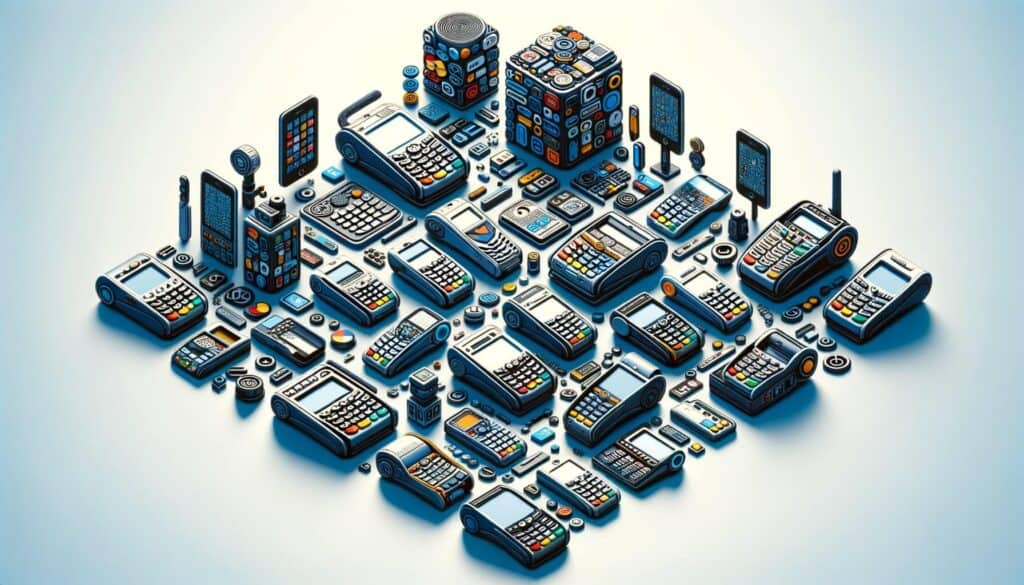
Credit card terminals come in various types, each catering to different business needs and preferences. Let’s explore some of the most common types of credit card terminals available in the market:
1. Traditional Wired Terminals: These terminals connect to the payment network using physical connections, such as Ethernet or phone lines. They are reliable and offer fast transaction processing. However, they require a fixed location and may have limited mobility.
2. Wireless Terminals: Wireless terminals use wireless communication interfaces, such as Wi-Fi or Bluetooth, to connect to the payment network. They provide flexibility and mobility, allowing merchants to accept payments anywhere within the range of the wireless network. These terminals are particularly useful for businesses that operate in outdoor or mobile settings.
3. Mobile Card Readers: Mobile card readers are small, portable devices that can be attached to smartphones or tablets. They transform these devices into credit card terminals, enabling merchants to accept payments on the go. Mobile card readers are popular among small businesses and independent contractors who require a cost-effective and convenient payment solution.
4. Virtual Terminals: Virtual terminals are software-based solutions that allow merchants to process credit card payments using a computer or mobile device. They eliminate the need for physical terminals and are ideal for businesses that primarily operate online or over the phone.
How Does a Credit Card Terminal Communicate with the Payment Network?
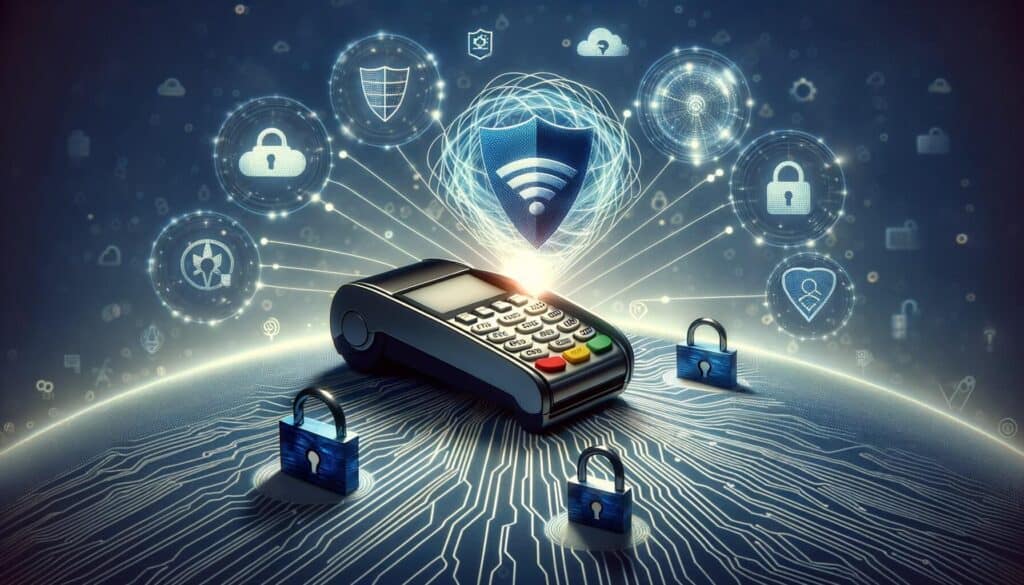
Credit card terminals rely on secure communication channels to transmit transaction data to the payment network for authorization and processing. The communication methods used by credit card terminals vary depending on the type of terminal and the available infrastructure. Let’s explore some of the common communication methods:
1. Ethernet: Many credit card terminals connect to the payment network using Ethernet cables. This method offers a reliable and fast connection, ensuring quick transaction processing. Ethernet connections are commonly used in fixed locations, such as retail stores or restaurants, where terminals are permanently installed.
2. Phone Line: Some credit card terminals use traditional phone lines to establish a connection with the payment network. These terminals dial a specific phone number to establish a secure connection for transmitting transaction data. Phone line connections are gradually becoming less common as businesses transition to more modern communication methods.
3. Wireless: Wireless credit card terminals use wireless communication interfaces, such as Wi-Fi or Bluetooth, to connect to the payment network. These terminals rely on existing wireless networks or cellular data connections to transmit transaction data securely. Wireless connections offer flexibility and mobility, making them suitable for businesses that require on-the-go payment processing.
4. Internet Protocol (IP): IP-based credit card terminals use the internet to establish a connection with the payment network. They connect to the merchant’s existing internet connection, either through Ethernet or Wi-Fi, to transmit transaction data securely. IP connections are widely used due to their convenience and compatibility with modern infrastructure.
Security Measures in Credit Card Terminals
Security is of paramount importance when it comes to credit card terminals. These devices handle sensitive cardholder data and must adhere to strict security standards to protect against fraud and data breaches. Let’s explore some of the security measures implemented in credit card terminals:
1. Encryption: Credit card terminals use encryption algorithms to protect sensitive data during transmission. Encryption converts the data into an unreadable format, ensuring that even if intercepted, the data remains secure. Advanced encryption standards, such as Triple Data Encryption Standard (3DES) or Advanced Encryption Standard (AES), are commonly used to safeguard transaction data.
2. Tokenization: Tokenization is a security technique that replaces sensitive cardholder data with unique tokens. These tokens are meaningless to anyone who intercepts them, rendering them useless for fraudulent purposes. Tokenization helps protect cardholder data stored within the terminal’s memory or transmitted to the payment network.
3. EMV Chip Technology: EMV (Europay, Mastercard, and Visa) chip technology is a global standard for secure credit card transactions. Credit card terminals equipped with EMV chip readers can process transactions using the chip embedded in the card. EMV chips generate unique transaction codes for each transaction, making it difficult for fraudsters to clone or counterfeit cards.
4. PCI DSS Compliance: The Payment Card Industry Data Security Standard (PCI DSS) is a set of security standards established by major card networks to protect cardholder data. Credit card terminals must comply with PCI DSS requirements to ensure the secure handling of sensitive information. Compliance involves regular security audits, vulnerability scans, and adherence to specific security protocols.
Troubleshooting Common Issues with Credit Card Terminals
While credit card terminals are designed to be reliable, occasional issues may arise that require troubleshooting. Here are some common issues merchants may encounter with credit card terminals and possible solutions:
1. Connection Problems: If the terminal fails to establish a connection with the payment network, check the physical connections or wireless settings. Ensure that Ethernet cables are securely plugged in or that the wireless network is functioning properly. Restarting the terminal or resetting the network settings may also resolve connection issues.
2. Card Reading Errors: If the terminal is unable to read a card, check for any visible damage or dirt on the card’s magnetic stripe or chip. Clean the card if necessary and try again. If the problem persists, the card may be faulty, and the customer should try an alternative payment method.
3. Slow Transaction Processing: Slow transaction processing can be caused by a variety of factors, such as a weak internet connection or outdated terminal software. Ensure that the terminal’s software is up to date and that the internet connection is stable. If the issue persists, contact the terminal provider or payment processor for further assistance.
4. Error Messages: Error messages displayed on the terminal’s screen can indicate various issues, such as invalid card information or network connectivity problems. Refer to the terminal’s user manual or contact technical support for guidance on resolving specific error messages.
Frequently Asked Questions about Credit Card Terminals
Q1. Can I use my credit card terminal to accept contactless payments?
Yes, many credit card terminals are equipped with Near Field Communication (NFC) technology, allowing them to accept contactless payments. Customers can simply tap their contactless-enabled cards or mobile devices on the terminal to complete the transaction.
Q2. How long does it take for a credit card transaction to be authorized?
The authorization process typically takes a few seconds. However, in some cases, it may take longer if additional verification is required or if the payment network is experiencing high volumes of transactions.
Q3. Can credit card terminals process transactions in multiple currencies?
Yes, some credit card terminals support multi-currency transactions. Merchants can configure the terminal to accept payments in different currencies, allowing them to cater to international customers or travelers.
Q4. What should I do if my credit card terminal is not printing receipts?
If the terminal is not printing receipts, check the paper roll to ensure it is properly loaded and not empty. If the paper roll is fine, check the printer settings on the terminal to ensure they are configured correctly. If the issue persists, contact technical support for further assistance.
Conclusion
Credit card terminals are essential tools for businesses of all sizes, enabling them to accept electronic payments securely and efficiently. Understanding the components, transaction process, types, communication methods, security measures, and troubleshooting common issues associated with credit card terminals is crucial for merchants and consumers alike. By familiarizing themselves with these aspects, businesses can ensure a seamless payment experience for their customers while maintaining the highest level of security and compliance with industry standards.